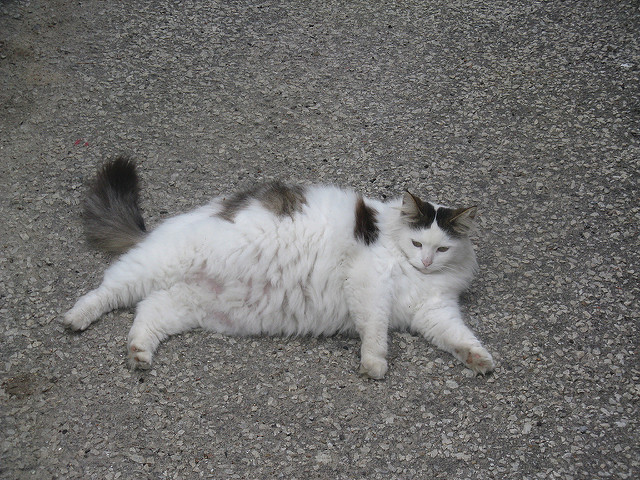Elizabeth Stainton Walker
If possible, I try to avoid thinking about life with my mother. When I was a girl, the two of us lived in a split-level house in a nicer part of Little Rock. On the outside, the house was beige and brick. Tussocks of monkey grass lined the walk leading to our front door. Attached was a carport, not a garage, and on the back was a deck that looked out into a neat, if not particularly manicured, expanse of green yard.
Inside, the house was different, crowded. My mom collected things. Here is a list of the things my mother collected: furniture, lamps, wrapping paper, china, books, crystal, sterling flatware, letters, framed artwork, documents, jewelry, scissors. This list is not exhaustive.
Because of reality television, it is trendy to discuss hoarding now. Documentaries have given my mother’s condition a kind of grotesque glamour. Viewers see these depictions of hoarding and feel better about their own, slightly cluttered, homes. When people have trouble surrendering one ex-lover’s sweater (from an otherwise immaculate closet), they laugh, saying “Oh, I’m such a hoarder.”
Hoarding was not trendy, however, when I was growing up. It was uncomfortable. It was embarrassing.
We moved into the house on Harmon Drive the summer after my eighth birthday. My mother’s mother had recently died. My thin, bereft grandfather helped my mom move all our furniture. He was old. She was overweight and exhausted. I remember her face turning scarlet as they carried the sofa. She was breathing heavily and looked like she was about to burst into flames. My hulking uncle, Dan, was supposed to help, too, but his wife wanted to see a movie that afternoon. My mother never forgave him.
The first week we lived in the house, my childhood best friend was allowed to come over to play. His name was Eric Morehead. Apollo 13 had just come out, though neither of us had seen it, and we pretended to be astronauts in the den downstairs. That was the last friend I had over as long as we resided in that house. My mom and I lived there until my sophomore year of high school.
The objects in our house were stacked into infinite piles, each with its own precarious strata: a newspaper, for instance, on top of which was a manila folder of my schoolwork, a hardcover bestseller, the cat’s vaccination records, a wax envelope of school pictures, a gift intended for but never delivered to a friend. The piles always threatened to fall over. My mother and I entered the house through the kitchen door. The front door would not open more than an inch or two because too many things were stacked in front of it.
Inside the kitchen, heaps of papers, some white and some yellowing, covered the countertops so that there was never even space to put down a coffee mug. Laundry baskets full of shit – clothes, books, nostalgia – were stacked in towers on the kitchen floor, and loose pieces of debris, having escaped from their respective stacks, littered the rest of the linoleum. To walk through the kitchen without crushing anything, you would have to place one foot in front of the other like a gymnast on a balance beam. In hoarding terminology, these are called the “goat trails.” These narrow walking paths are necessary in order to navigate rooms without disturbing their contents.
We never went into the living room. The luxurious furniture in it was covered with boxes, framed portraits, old quilts, and other effects that rendered said furnishings completely unusable. The cat was the only one of us who could move around in there. Once she clawed up the upholstery of a wingback chair. Who knows how long it was before we noticed? Weeks, at least. Probably months.
We kept our dirty clothes in a mound in the hallway. My mother thought laundry hampers were unsanitary because they allowed sweaty clothes to fester and ferment without any air or light. So instead our worn clothing waited in the middle of the hall, where it collected dust and wads of hair since there was no room to run a vacuum.
Once, the washing machine broke. We could easily have afforded a new one. The problem was that the machine was located was behind a waist-high wall of old sheets and towels, so there was no way for a delivery person to get into the laundry room to install a new washer. Instead, my mom and I took everything to a Laundromat. It was supposed to be a one-time event, just until we cleared a path to get a new machine in, but we never made room. We continued to take things to the Fun Wash until my mother died, years later.
Her room was the worst. The door to it would not close because of the heaps. Shoeboxes full of tax and health insurance forms covered my mother’s floor. The contents of three different purses spilled across one side of her mattress so that her double bed was rendered, in effect, twin-sized. She had bought a window treatment, but with no room to use a ladder, she had instead just tacked up a teal sheet over the blinds to block out the sunrise. The two of us would lie like spoons on the available half of her bed, and she would scratch my back until I was drowsy enough to go to my own bedroom.
Sometimes, my mother would lose a form or document among the hundreds of other forms and documents. She would ask me to help her look for it. I would try to help by combing through the paperwork, but when I would attempt to sort through the morass, she would shout, “Don’t dig!” If I would give the contents of her room only a cursory scan, she would say, “You’re not looking hard enough.” Later, when she was in a better mood, after we had found the missing item, I would tell her how hard she made it for me, between “don’t dig!” and “you’re not looking hard enough!” Together we would laugh at how impossible she was to please.
Our house was filled with clothes on hangers. Outgrown church dresses and corduroys bulged from the closets and caused the rods inside to sag. Not just in her bedroom, or in mine, but in every room. My mother’s weight fluctuated, so clothes of every size took up residence in the doorways. Outfits she had not worn in years, or would never wear, hung on the doorframes of the closets, bedrooms, bathrooms, so that to walk from room to room, you had to duck under the hanging garments. Many of them were in dry cleaning bags. I would part them like a curtain to enter and exit the hallway, or, if I were in a hurry, I would dash through the row of bags and leave them swinging in my wake. Sometimes the clothes would slip off their hangers onto the floor, and my mom would scream at me for being careless.
When I was fifteen, I was hopelessly, achingly in love with a young man named Jacob. He was eighteen and had just graduated. Jacob had black, curly hair and wire-rimmed glasses and wore black every day of his life. He showed up on his motorcycle one summer evening when my mother was working the night shift at the hospital. He had his own helmet, but not one for me, and I knew my pediatric nurse mother would never allow it. Because of the state of our house, I could not invite Jacob inside. The two of us sat out on the back deck in two mildewed patio chairs. When I began to get cold, he said, “Come sit in my lap, then.” I let him hold me and kiss my face and neck for hours. He sucked my earlobes. He kissed my fingertips. When it was time to leave, we walked back around the house. On the way, he peered through back window. “What’s the deal with all the dry cleaning?”
People think hoarders love – worship – things. I do not believe this is true exactly. For my mom, at least, it was about the lifestyle these things represented. The objects in our house were promises of a future in which my mother would have the opportunity to serve elaborate meals on that antique buffet table, or make a quilt out of all my old tee shirts, or fit into that dress from college. When she would buy something – a new lamp, say – she would buy it in the hope that it would pull our house, and maybe our life, together. She wanted to believe that buying something new and beautiful would transform her into something new and beautiful, that saving something from the trash bin would save her.
When my mother died, my aunts and uncles helped me clean out the house so that it could be sold. We stood for hours filling black garbage bags with papers that had become meaningless without my mother to explain their significance. Most of her treasures went in an estate sale. I was sixteen. Even if I had wanted to, I could not keep everything she ever touched, every piece of paper she ever wrote on. My uncle Joe told me they had found two dozen pairs of scissors in the excavation. I said that sounded about right.
We saved a few pieces: a mahogany bed frame she never cleared enough space to set up; a set of chairs she had recovered in leopard print fabric; a charcoal portrait from a trip to New Orleans with friends. In that portrait, she is twenty-five and wearing a peasant blouse and three necklaces. Her hair falls in waves over her shoulders. Her eyelashes go on for days. I like to imagine her sitting for this portrait for at the booth of a sketch artist, just off of Bourbon Street. She has no belongings. She is slender and weightless like sunlight, or canary’s bones, or breath.
Elizabeth Stainton Walker is completing her Master’s in English at University of Arkansas. She is married with three dogs. She is also the English Department secretary and a great dresser. This is her first publication.


